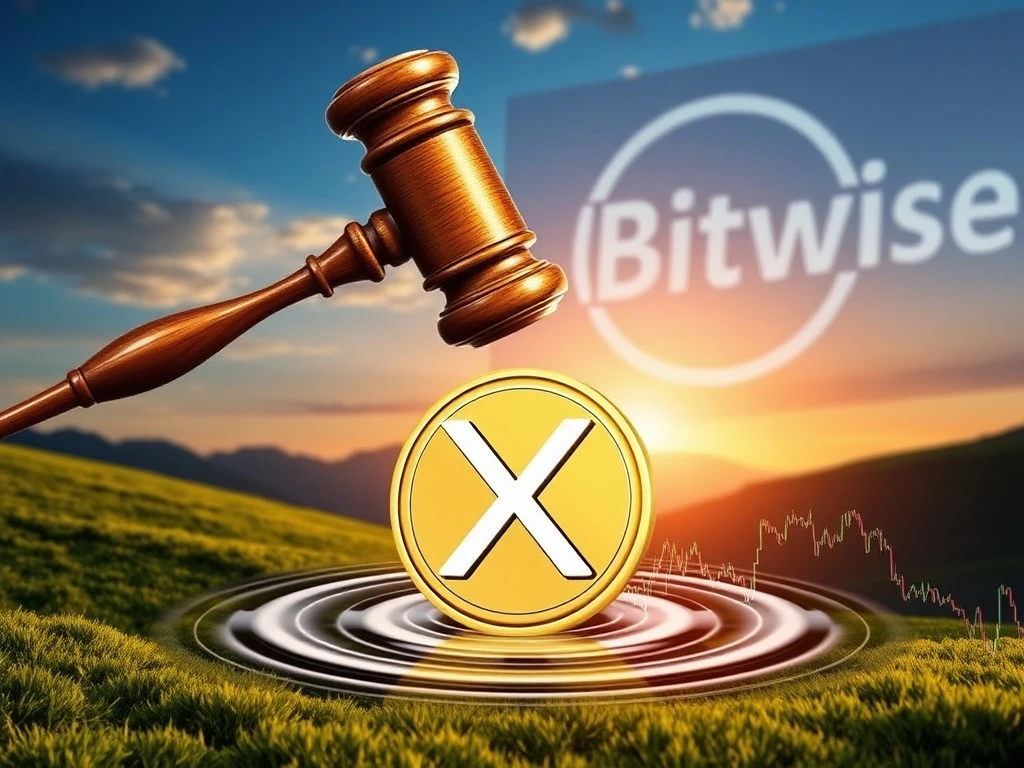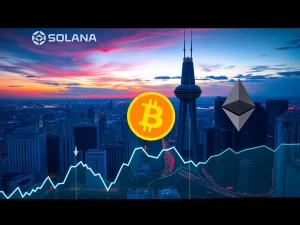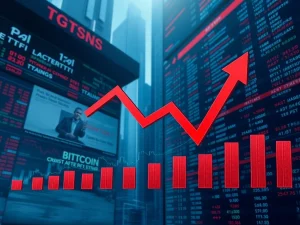XRP Plunge: SEC’s Shocking Reversal on Bitwise Crypto ETF Ignites Market Fears

The cryptocurrency world was recently rocked when the U.S. Securities and Exchange Commission (SEC) delivered a sudden blow, reversing its staff-level approval of Bitwise’s proposed crypto exchange-traded fund (ETF). This stunning turn of events, particularly impactful for assets like XRP, has reignited debates about regulatory consistency and market stability. The incident has sent ripples through the digital asset landscape, leaving investors and industry participants grappling with heightened crypto regulatory uncertainty.
The Abrupt SEC Crypto ETF Reversal: What Happened?
On July 2, 2025, Bitwise received what appeared to be a green light for its comprehensive crypto ETF, designed to offer exposure to Bitcoin, Ethereum, and XRP. Yet, within hours, the SEC invoked Rule 431(e), a provision allowing for further review, to temporarily halt the approval. This swift reversal has been widely described by industry experts as ‘bizarre’ and a clear sign of the SEC’s unpredictable approach to crypto fund applications [1][2].
The decision raises critical questions:
- Initial Approval: Why was staff-level clearance granted if a higher-level review was imminent?
- Rule 431(e): How is this rule being applied to crypto products specifically, and what are the clear criteria for its invocation?
- Market Impact: What message does such an abrupt change send to asset managers and investors seeking clarity?
This incident is not isolated. The SEC has a history of delaying or rejecting crypto ETF applications, particularly those for spot Bitcoin ETFs, while approving futures-based products. This inconsistency fuels frustration within the industry, which seeks clear, standardized guidelines for digital asset products.
Why the Bitwise ETF Halt Sent XRP Price Dropping
The immediate fallout from the SEC’s decision was felt across the crypto market, with XRP experiencing a notable 6% XRP price drop in the days following the announcement [5]. This decline underscores the sensitivity of digital assets to regulatory news, especially for XRP, which has a contentious history with the SEC regarding its classification as a security.
For XRP holders and traders, the halted ETF represented a potential avenue for broader institutional adoption and increased liquidity. The reversal dampened these expectations, leading to a sell-off as traders reacted to the renewed uncertainty. The ongoing legal battle between Ripple (the company behind XRP) and the SEC means that any regulatory action, positive or negative, directly influences XRP’s market performance.
Unpacking Crypto Regulatory Uncertainty: A Pattern of Delays?
The Bitwise ETF halt is not an isolated event but rather part of a broader pattern of crypto regulatory uncertainty emanating from the SEC. A similar incident occurred in 2023, where another crypto ETF faced a pause after initial approval. This recurring behavior suggests a deeper struggle within the agency to reconcile investor protection mandates with the rapid pace of innovation in crypto markets.
An industry source noted, “This inconsistency undermines market confidence and complicates product development for asset managers” [4]. Critics have also voiced transparency concerns about Bitwise’s fund composition and governance structures [6], adding another layer of complexity to the SEC’s review process.
The core challenge lies in the SEC’s approach:
- Balancing Act: How to protect retail investors without stifling innovation.
- Inconsistent Enforcement: Why are futures-based ETFs approved swiftly while spot ETFs face continuous hurdles?
- Internal Conflicts: Reports suggest staff-level approvals are sometimes overridden by higher-level decisions, indicating a lack of internal coordination [8].
The Broader Implications for the Crypto Market and XRP News
This latest development has significant implications beyond just Bitwise and XRP. It highlights the pervasive regulatory limbo that continues to plague the crypto sector. Despite growing institutional interest, evidenced by recent applications for in-kind creation of Bitcoin ETFs from giants like Fidelity and BlackRock, the absence of standardized guidelines creates a challenging environment for innovation and investment.
Legal experts argue that the SEC’s approach appears reactive rather than proactive. The agency’s actions, while emphasizing investor protection, risk stifling innovation by creating an unpredictable landscape for fund providers and investors. The constant shifts in regulatory stance make it difficult for companies to plan and develop new products, hindering the natural evolution of the crypto market.
For those following XRP news, this event underscores how regulatory developments can dramatically influence asset values and market sentiment. The broader crypto market needs clarity and a coherent framework to thrive, rather than being subjected to abrupt reversals that erode trust.
Navigating the Future: What’s Next for Crypto ETFs?
The future of Bitwise’s ETF, and indeed the broader crypto fund ecosystem, hinges on the SEC’s ability to resolve its internal conflicts and establish a clear, consistent regulatory framework. Without this, the market will likely continue to experience volatility driven by regulatory uncertainty rather than fundamental market dynamics.
Investors and asset managers are calling for greater transparency and a more collaborative approach from regulators. While the SEC’s mission to protect investors is crucial, its methods must evolve to meet the unique challenges and opportunities presented by digital assets. The industry awaits a proactive stance that fosters innovation while ensuring market integrity.
The Bitwise ETF incident serves as a stark reminder that regulatory clarity is paramount for the crypto market’s maturation. Until a stable framework is in place, expect continued vigilance from market participants and ongoing debates about the SEC’s role in shaping the future of digital finance.
Frequently Asked Questions (FAQs)
1. What was the SEC’s recent decision regarding the Bitwise Crypto ETF?
The SEC initially granted staff-level approval for Bitwise’s proposed crypto ETF, which included exposure to Bitcoin, Ethereum, and XRP, but then temporarily halted the approval hours later under Rule 431(e) for further review.
2. How did the SEC’s decision affect XRP’s price?
Following the announcement of the halt, XRP’s price fell by 6%, reflecting increased market uncertainty and investor concern over potential delays in institutional adoption.
3. Why is the SEC’s regulatory approach controversial in the crypto space?
The SEC’s approach is controversial due to perceived inconsistencies (e.g., approving futures ETFs but halting spot ETFs), a reactive rather than proactive stance, and a lack of clear, standardized guidelines for digital assets, leading to market uncertainty.
4. What is Rule 431(e) and how was it applied in this case?
Rule 431(e) is an SEC provision that allows the commission to declare an effective registration statement for a fund to be ineffective, typically for further review or if the filing is deemed incomplete or misleading. In this case, it was used to halt the Bitwise ETF approval hours after it was initially granted, without immediate public explanation.
5. Are other institutions still pursuing crypto ETFs despite these regulatory challenges?
Yes, major financial institutions like Fidelity and BlackRock continue to submit applications for various crypto ETFs, signaling sustained institutional interest despite the ongoing regulatory hurdles and uncertainty.
6. What does this incident mean for the future of crypto regulation?
This incident underscores the urgent need for a clear, consistent, and transparent regulatory framework for cryptocurrencies and related financial products. It highlights the challenges the SEC faces in balancing investor protection with fostering innovation in a rapidly evolving market.








